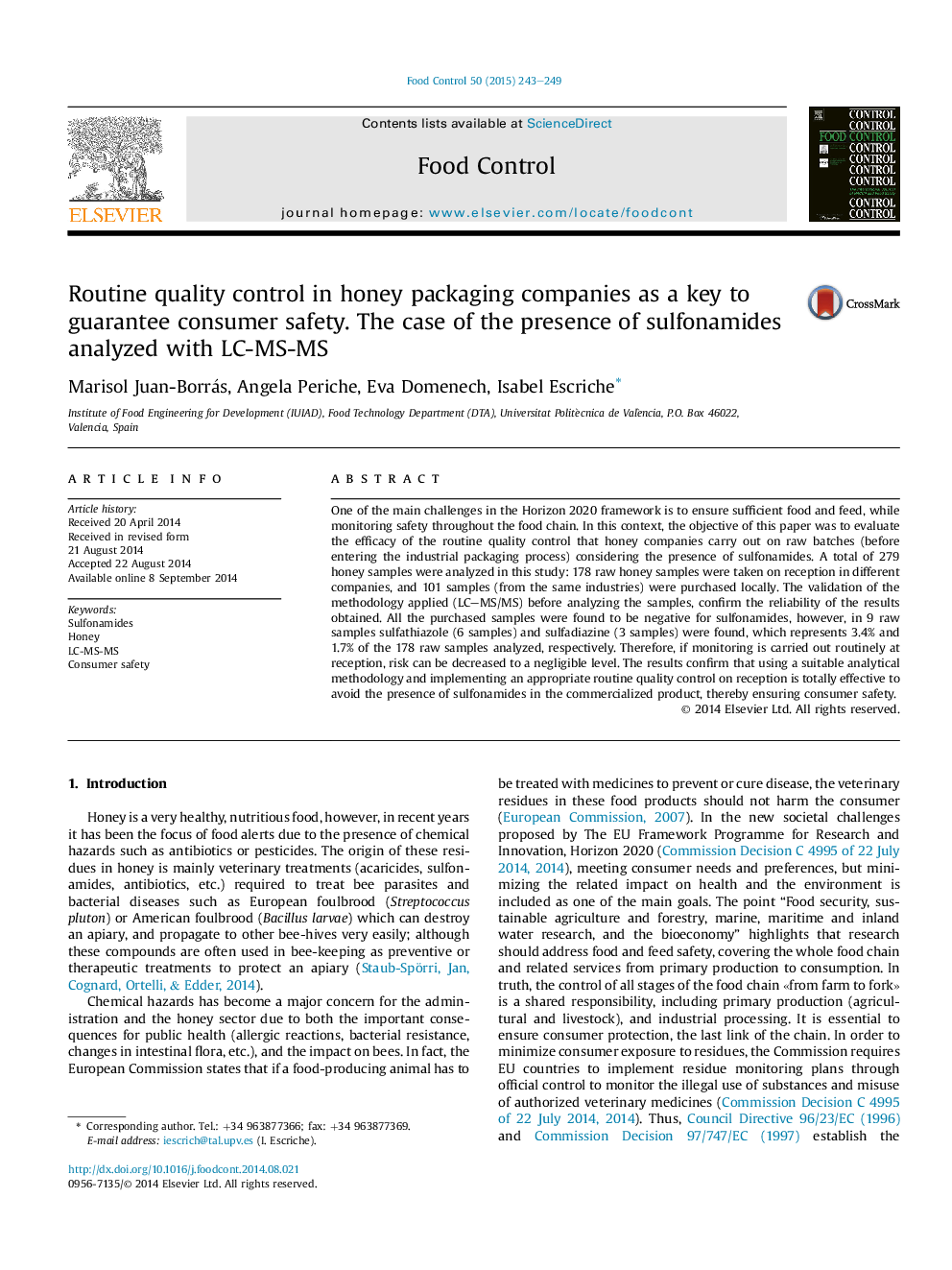| Article ID | Journal | Published Year | Pages | File Type |
|---|---|---|---|---|
| 6390984 | Food Control | 2015 | 7 Pages |
â¢Validation of LC-MS/MS confirm the reliability of the sulfonamide results obtained.â¢Commercial honey samples were negative for sulfonamides.â¢Routine control at reception in honey companies can decrease risk to a negligible level.â¢Suitable analysis and appropriate quality control ensure consumer safety.
One of the main challenges in the Horizon 2020 framework is to ensure sufficient food and feed, while monitoring safety throughout the food chain. In this context, the objective of this paper was to evaluate the efficacy of the routine quality control that honey companies carry out on raw batches (before entering the industrial packaging process) considering the presence of sulfonamides. A total of 279 honey samples were analyzed in this study: 178 raw honey samples were taken on reception in different companies, and 101 samples (from the same industries) were purchased locally. The validation of the methodology applied (LC-MS/MS) before analyzing the samples, confirm the reliability of the results obtained. All the purchased samples were found to be negative for sulfonamides, however, in 9 raw samples sulfathiazole (6 samples) and sulfadiazine (3 samples) were found, which represents 3.4% and 1.7% of the 178 raw samples analyzed, respectively. Therefore, if monitoring is carried out routinely at reception, risk can be decreased to a negligible level. The results confirm that using a suitable analytical methodology and implementing an appropriate routine quality control on reception is totally effective to avoid the presence of sulfonamides in the commercialized product, thereby ensuring consumer safety.
